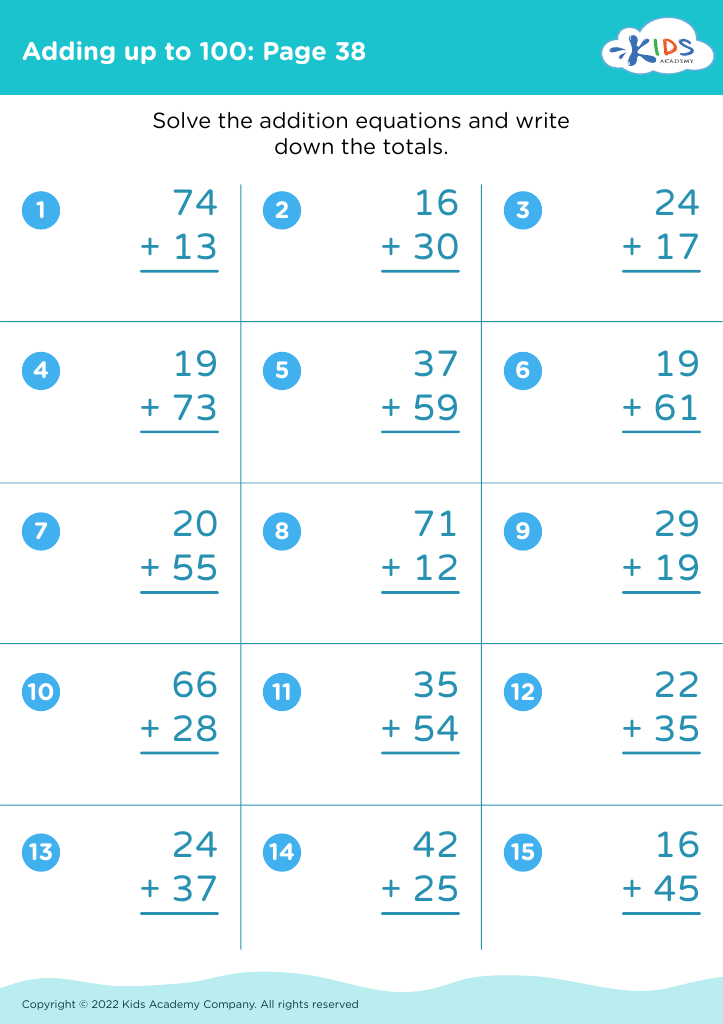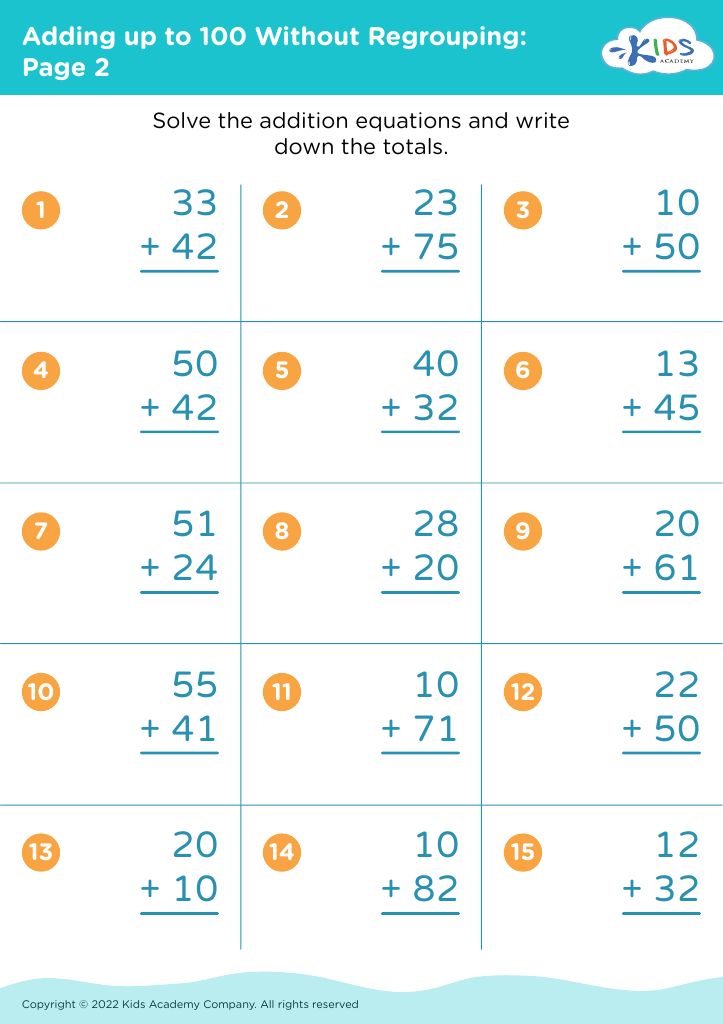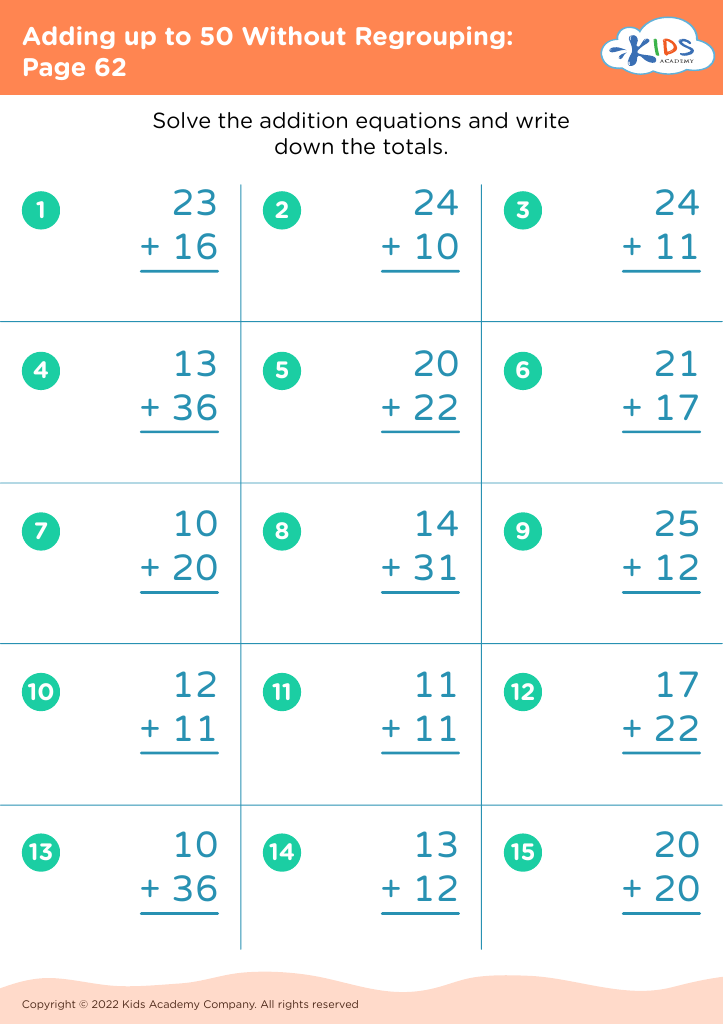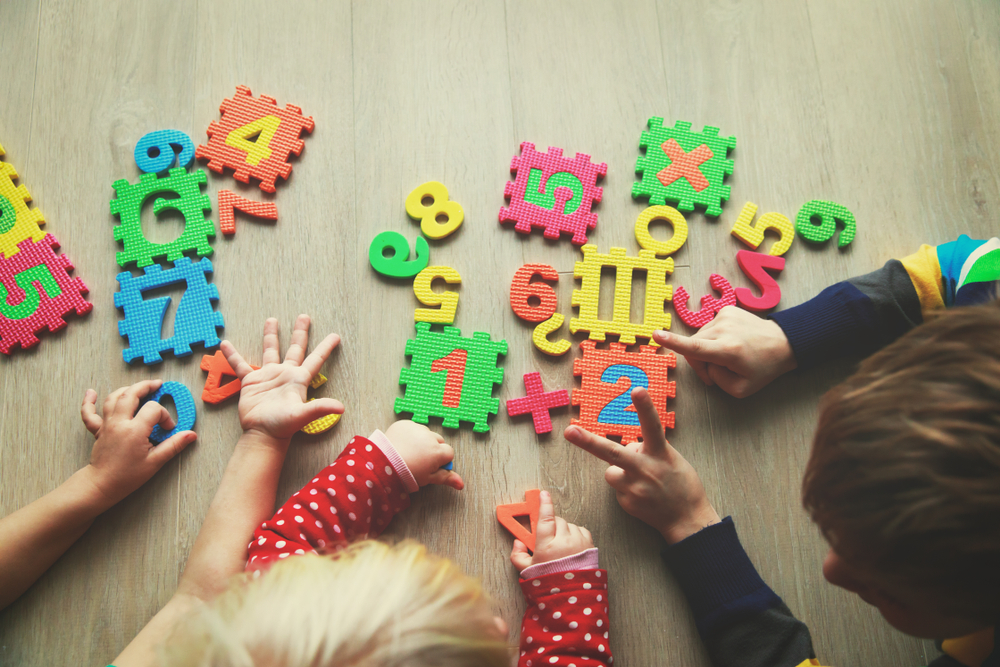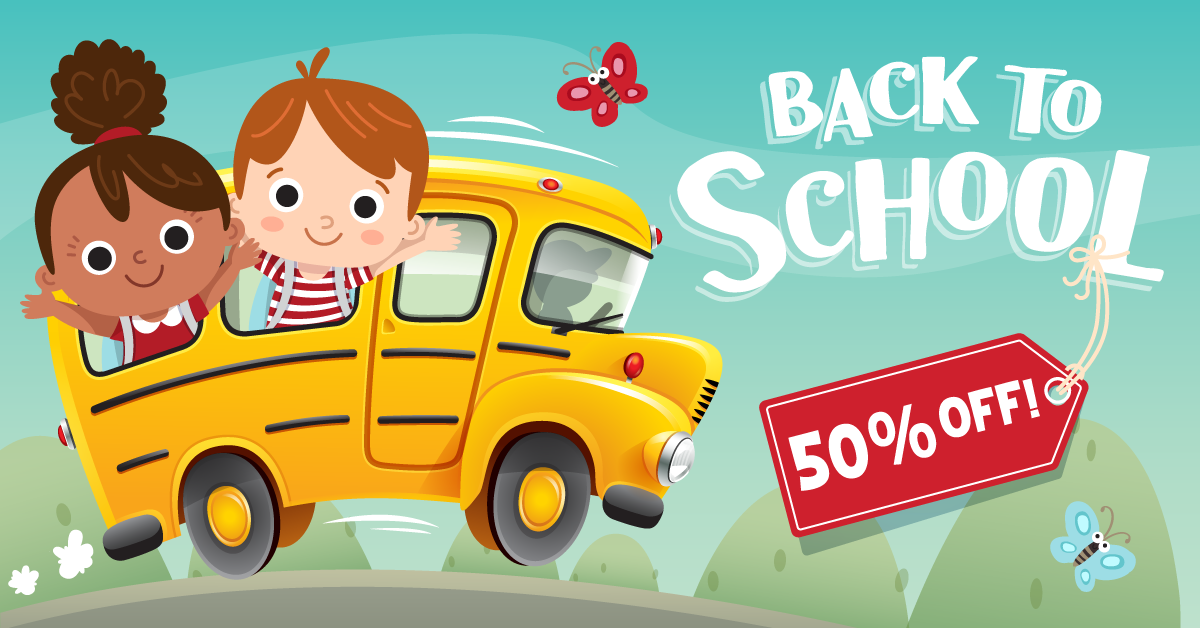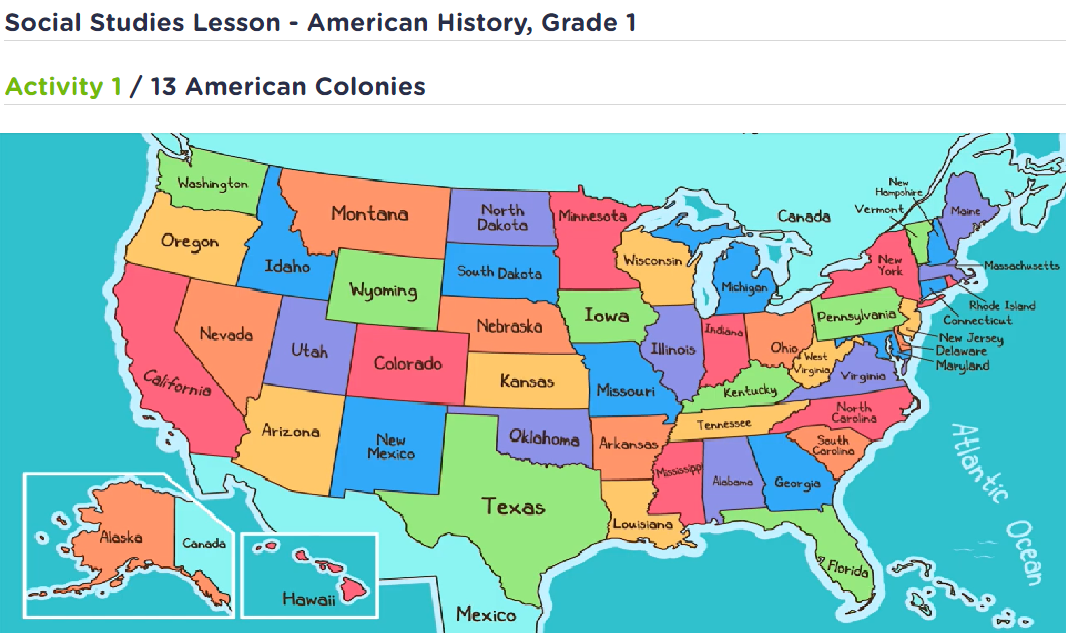Color matching Math Worksheets for 8-Year-Olds
3 filtered results
-
From - To
Welcome to our Color Matching Math Worksheets for 8-Year-Olds! These engaging worksheets are designed to enhance mathematical understanding through vibrant color activities. Each worksheet encourages children to match numbers with corresponding colors, reinforcing basic math skills while fostering creativity. Your child will enjoy a unique learning experience that combines fun with education, allowing them to practice addition, subtraction, and number recognition in an interactive way. Perfect for homeschooling, classroom use, or supplemental practice, our resources cater specifically to the interests and developmental levels of 8-year-olds. Explore our collection and watch your child thrive in their math journey!
Color matching math for 8-year-olds is an engaging and effective way to enhance mathematical understanding and promote critical thinking skills in young learners. At this developmental stage, children are naturally drawn to vibrant visuals, making color matching an enjoyable method to teach concepts such as addition, subtraction, patterns, and grouping.
Parents and teachers should care about this approach because it caters to different learning styles. Visual learners, in particular, benefit immensely from associating colors with numbers or quantities, helping them to grasp abstract concepts more concretely. Moreover, using color-coded materials allows for quicker identification of relationships between numbers and operations, fostering stronger problem-solving skills.
Additionally, color matching activities can create a collaborative and interactive learning environment. When children work together, they practice communication and cooperation, enriching their social skills while reinforcing math concepts. This technique can also bridge the gap between play and learning, making math feel less intimidating and more approachable.
Ultimately, encouraging young learners to engage with color matching math not only aids in their mathematical development but also cultivates a lifelong love for learning, instilling confidence that will benefit them in future academic pursuits.

